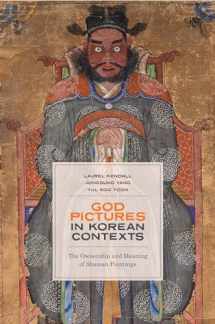
God Pictures in Korean Contexts: The Ownership and Meaning of Shaman Paintings
Book details
Summary
Description
Shamans walking on knives, fairies riding on clouds, kings with dragon mounts: They are gods and they are paper images. Some are repulsed and unsettled by shaman paintings, some cannot stop collecting them, and some use them as sites of veneration. Laurel Kendall, Jongsung Yang, and Yul Soo Yoon explore what it is that makes a Korean shaman painting magical or sacred. How does a picture carry the trace of a god and can it ever be “just a painting” again? How have shaman paintings been revalued as art? Do artfulness and magic ever intersect? Does it matter, as a matter of market value, that the painting was once a sacred thing? Navigating the journey shaman paintings make from painters’ studios to shaman shrines to private collections and museums, the three authors deftly traverse the borderland between scholarly interests in the material dimension of religious practice and the circulation of art.
Illustrated with sixty images in color and black and white, the book offers a new vantage point on “the social life of things.” This is not a story of a collecting West and a disposing rest; the primary collectors and commentators on Korean shaman paintings are South Koreans re-imagining their own past in light of their own modernist sensibility. It is a tale told with an awareness of both recent South Korean history and the problematic question of how the paintings are understood by different South Korean actors, most particularly the shamans and collectors who share a common language and sometimes meet face-to-face.


We would LOVE it if you could help us and other readers by reviewing the book
Book review



